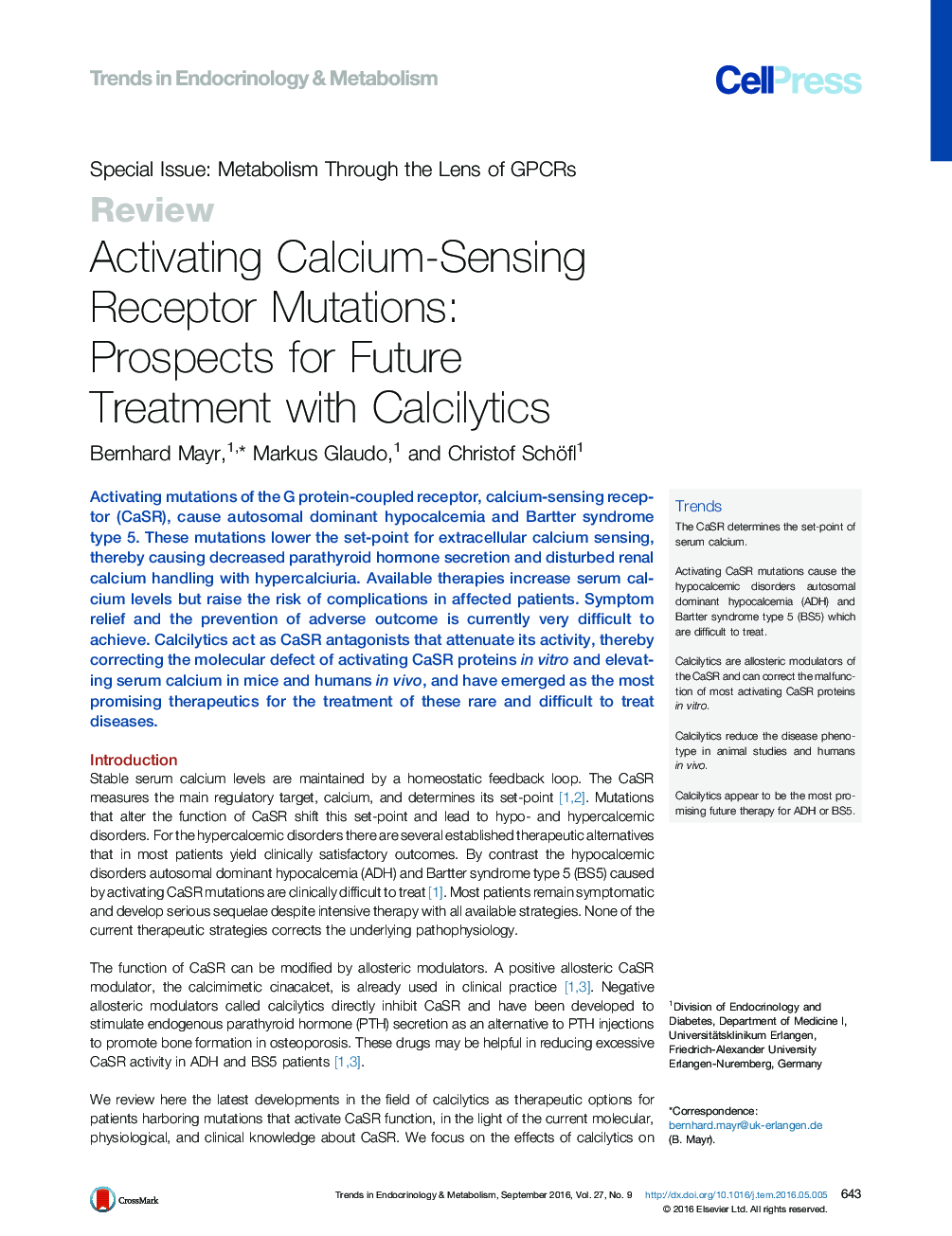| Article ID | Journal | Published Year | Pages | File Type |
|---|---|---|---|---|
| 2810056 | Trends in Endocrinology & Metabolism | 2016 | 10 Pages |
Activating mutations of the G protein-coupled receptor, calcium-sensing receptor (CaSR), cause autosomal dominant hypocalcemia and Bartter syndrome type 5. These mutations lower the set-point for extracellular calcium sensing, thereby causing decreased parathyroid hormone secretion and disturbed renal calcium handling with hypercalciuria. Available therapies increase serum calcium levels but raise the risk of complications in affected patients. Symptom relief and the prevention of adverse outcome is currently very difficult to achieve. Calcilytics act as CaSR antagonists that attenuate its activity, thereby correcting the molecular defect of activating CaSR proteins in vitro and elevating serum calcium in mice and humans in vivo, and have emerged as the most promising therapeutics for the treatment of these rare and difficult to treat diseases.
TrendsThe CaSR determines the set-point of serum calcium.Activating CaSR mutations cause the hypocalcemic disorders autosomal dominant hypocalcemia (ADH) and Bartter syndrome type 5 (BS5) which are difficult to treat.Calcilytics are allosteric modulators of the CaSR and can correct the malfunction of most activating CaSR proteins in vitro.Calcilytics reduce the disease phenotype in animal studies and humans in vivo.Calcilytics appear to be the most promising future therapy for ADH or BS5.
